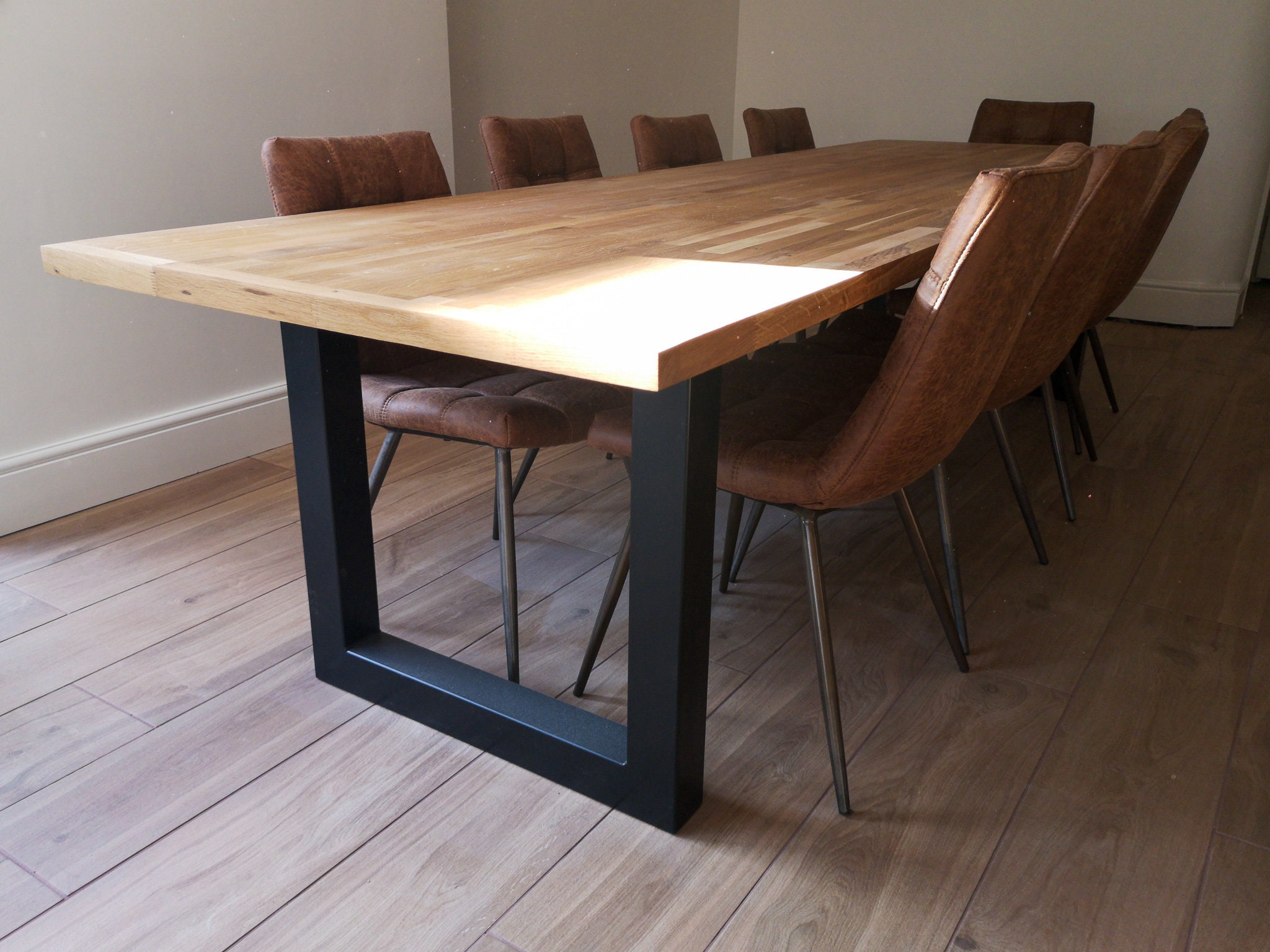A Detailed Appearance at Table Leg Styles: Discovering the Perfect Suit
Choosing the appropriate dining table leg style is essential for both visual appeal and sensible functionality. Standard 4 legs offer ageless style and stability, while the pedestal base gives boosted legroom and a modern appearance. For those with larger tables, trestle legs ensure tough support, whereas hairpin legs present a mid-century modern ambiance with their minimalist layout. The x-shaped legs blend modern style with boosted stability. Each of these options brings special benefits, making the selection greater than just an issue of preference. Discover even more to uncover which style flawlessly matches your eating space and way of living.
Typical Four Legs
Among the various types of dining table leg designs, the typical four-leg layout continues to be a classic option for several households. Four legs provide well balanced support, guaranteeing the table continues to be steady and qualified of birthing substantial weight (dining room table legs).
From a visual viewpoint, the typical four-leg layout can be quickly adjusted to various interior styles. Whether crafted from timber, metal, or a combination of materials, these legs can be intricately carved, sleek and minimalistic, or anything in between. Their convenience permits them to match both rustic and contemporary setups effortlessly.
Furthermore, the uncomplicated framework of the four-leg layout facilitates simplicity of activity and positioning within a space. Unlike more complex bases, this design reduces blockages, giving sufficient legroom for restaurants. In recap, the conventional four-leg dining table leg style marries sustaining elegance with useful capability, making it a sharp option for those seeking both form and function in their dining furnishings.
Pedestal Base
Frequently celebrated for its stylish and space-efficient layout, the pedestal base is a notable alternative to the typical four-leg arrangement in table leg designs. This distinctive base typically features a single central column supporting the table top, which can vary in type, from ornately carved timber to streamlined, contemporary steel. One of the main advantages of the stand base is its capacity to take full advantage of legroom and seating adaptability. Without corner legs, restaurants are afforded better liberty of movement, making it a suitable choice for round and oval tables that advertise even more intimate and inclusive events.
Furthermore, the stand base's central support can handle significant weight, enabling for using heavier tabletops, such as marble or thick wood. This stamina combined with its aesthetic adaptability makes the pedestal base a prominent choice in both standard and contemporary indoor settings. It can perfectly incorporate with numerous layout motifs, from timeless sophistication to minimal modernity. The central column itself provides a canvas for complex layouts and creative expressions, including a component of visual interest beneath the table. In recap, the stand base incorporates functionality with style, making it an improved and practical alternative for varied dining settings.
Trestle Legs
Trestle legs give a robust and classic structure for eating tables, defined by their horizontal cross-bracing and sturdy assistance light beams. Stemming from medieval times, this style has actually developed yet maintained its necessary framework, making it a perennial favorite in both conventional and contemporary settings. The main trestle beam, usually sustained by 2 or more upright articles, supplies phenomenal stability, enabling bigger table lengths without the need for added legs.
A significant benefit of trestle leg tables is the ample legroom they provide. Unlike tables with four corner legs, the absence of obstructions at the table's sides gives unblocked area for chairs and restaurants, boosting comfort and availability. This makes trestle tables excellent for suiting larger events, whether in a dining-room or a banquet hall.
From rustic farmhouse to smooth modern-day designs, trestle legs can be customized to fit specific preferences. Their long-lasting appeal and useful advantages make trestle legs a compelling choice for those looking for both design and functionality in their dining table.
Hairpin Legs

The allure of hairpin legs lies in their simplicity and flexibility - dining room table legs. Readily available in a range of materials, including steel and brass, they can be completed in many shades to complement different indoor designs. Whether coupled with a rustic wooden table top or a modern glass surface, barrette legs easily mix performance with a touch of classic charm
Toughness is an additional notable function of barrette legs. Regardless of their fragile look, these legs are engineered to bear considerable weight, making sure the table continues to be stable and protected. Furthermore, they are reasonably very easy to install, making them a popular choice for DIY lovers and expert furniture makers alike.
X-Shaped Legs

Constructed from materials such as steel, timber, or a combination of both, X-shaped legs can be tailored to match numerous design preferences. Steel legs usually provide a streamlined and industrial feel, suitable for loft-style homes and contemporary eating rooms. On the other hand, wooden X-shaped legs use a warmer, more rustic charm, appropriate for farmhouse or diverse interiors. The flexibility in products permits homeowners to personalize their eating tables to much better fit their total design plan.
Moreover, the engineering behind X-shaped legs makes sure also weight circulation, decreasing the risk of wobbling and enhancing sturdiness. This makes them specifically appropriate for larger dining tables that useful content need extra support. Fundamentally, X-shaped legs mix useful engineering with modern-day looks, making them a classic choice for diverse eating atmospheres.
Final Thought
A thorough understanding of table leg designs reveals the distinct characteristics and benefits of each design. Typical 4 legs provide security and ageless allure, while pedestal bases provide legroom and a streamlined look. Trestle legs ensure robust assistance for larger tables, and like it hairpin legs introduce a mid-century modern aesthetic. X-shaped legs integrate contemporary layout with boosted stability. Choosing the proper leg style makes certain both useful and aesthetic fulfillment in any kind of dining room.